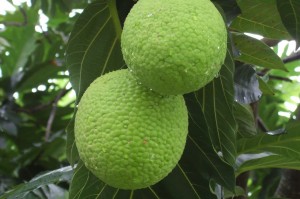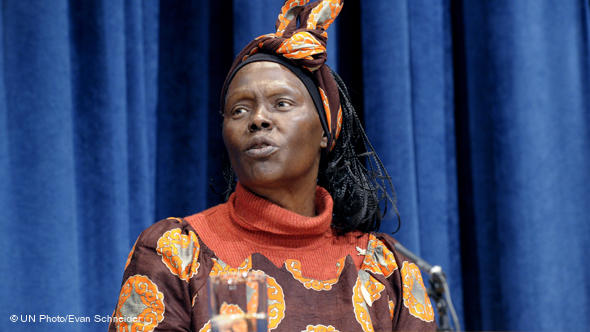Search Results for Tag: trees
On location in Rwanda: towering trees and crazy discussions
Modern skyscrapers and people talking to towering trees, irrepressible children who insisted on being in every frame and a heated discussion during a drive – reporter Julia Henrichmann came away with some lasting impressions while filming in Rwanda.
It doesn’t matter where you are in the Rwandan capital Kigali, chances are you’ll always find a moto-taxi (a motorcycle taxi), at your side waiting to drive you through the lush green valleys dotting the city. On the one hand, Kigali is a modern city with skyscrapers, busy streets and crowded shops. On the other, it’s also not unusual to come across pockets where some of the most amazingly large trees and plants find space to grow.
To get a sense of how big the trees are, I asked our driver Ismael to stand next to one I liked very much. He suddenly touched the tree and began talking to it. I asked him why. “Oh,” he said. “This must be a very old one, much older than me so I have to treat it with respect.”
I cannot say whether people are as respectful of nature everywhere in the country. There are many areas in Rwanda where people cut almost every tree for firewood. Gathering firewood is normally done by children. Some don’t go to school because of the long distances they have to walk to get firewood. It’s a problem that’s worsening by some estimates. Firewood is used in homes for cooking because there’s often no electricity. Many use diesel generators.
When we came to the countryside to the district of Nasho, many children wanted to touch me. Most of them had never seen a white person because they had never traveled beyond their district. They were delightful and innocent in a way that I have never seen children elsewhere. Maybe that’s because they did not expect anything from me. All they wanted was that I listen to them and spend some time with them (even though I did not understand their language).
And, of course they wanted me to take photos with them, even during the filming. They walked into every frame! How could we tell them that we just wanted Anastase Tabaro in the film, the man who brought electricity to their village? So we decided to make them part of the film. The villagers’ happiness and pride was palpable as they led us to the little hydro-electrical pump Anastase Tabaro had built for them.
Driving back to Kigali, we had a crazy animated discussion in the car and I became a bit alarmed that the Rwandans would come to blows. So they stopped talking in their native language and switched to English and French for my benefit. And so, what was the big discussion about? What’s the topic that pops up in conversations in Rwanda sooner or later? The genocide.
Even though it happened almost 20 years ago, everybody still talks very much talks about it. Every family here has been affected personally by the tragic event. When you come to Rwanda, you should no longer ask: “Are you a Hutu or a Tutsi?” That’s not the question anymore. The question we argued about in the car was the role of the media during the war and the genocide. Do you as a camera crew film or do you help the victims lying at your feet? During the three-hour drive, we came no closer to any answers. You will probably never find them.
Multi-talented trees that fight hunger, climate change and poverty
Sometimes, all it takes is the right idea to kill (at least) two birds with one stone. And that’s what Mary and her husband Mike had back in 2008. They wanted to find a way to address hunger in their native county Jamaica. That’s why they decided to plant more breadfruit-trees, because the breadfruit itself can be used for several different dishes. And their plan worked: not only did Mary and Mike help alleviate hunger, but they also helped bring some green back to the region, benefiting the climate, too. That’s the concept that drives their organization, the Trees that feed Foundation.
With their project, they also boosted the local economy by developing a model for farmers to share. And their idea encouraged follow-up projects, too. In cooperation with another non-profit organization, the Compatible Technology International, they developed a breadfruit-mill out of a bicycle – and thereby developed a CO2- neutral way to process the fruits.
And since then, their plan has only spread further, from breadfruit to other trees that produce edible fruits, like the moringa and pigeon pea trees as well as mango and guava trees. “Our intent is to supply trees for planting in small farms, field margins and urban backyards. We will focus on plants that require minimal use of fertilizers and agricultural chemicals”, the Foundation explains on its website.
If you would like to support Trees that feed and help them expand to communities in the Caribbean, Central America and Africa,go to check their website to find out how.
Beauty and Destruction lie close together
The video was uploaded to youtube by bittusahgal – it has amazing pictures and delivers a very strong message. The film is described as a ‘non-commercial attempt to highlight the fact that world leaders, irresponsible corporates and mindless ‘consumers’ are combining to destroy life on earth.’ All you have to do is watching and think. There’s a lot possible to keep those beautiful pictures. The cut was compiled by the Sanctuary Asia network.
In memory of Wangari Maathai
She was the first woman who got the Nobel Peace Prizein 2004 for her campaigns to save Kenyan forests. Kenyan environmentalist, Wangari Maathai, died on September 25th while undergoing treatment for cancer at a hospital in Nairobi. She worked over the last decades to plant over 20 million trees throughout Africa. She always had to battle with the government of her country. She was imprisoned and brutalised, but she won.
In 1977 Wangari Maathai founded the Green Belt Movement. The organisation will outlast her. “You cannot protect the environment unless you empower people, you inform them, and you help them understand that these resources are their own, that they must protect them,” she said and she was definitly right.
Here you’ll find a video (“I will be a hummingbird”) that is worth watching to get a sense of Wangari Maathai.
At the organisations homepage you can share your condolences.
Ready! Set! Go! Win a GLOBAL IDEAS USB flash drive!

You have played our new WebDocumentary about Guyana?
Well, then it's up to you to show us what you have learned!
Go to our website…
@ http://bit.ly/guyana_quiz_01
…and answer the first of five questions.
Until friday we will ask you one question a day. Answering each question gives you five letters. Put them in the right order and you will get a solution word. Send us the word on friday and you will have pretty high chance to win one of the flash drives.
If you have not played the WebDocumentary yet, here's your chance (again): http://bit.ly/WebDoc_Guyana
The whole GLOBAL IDEAS team wishes you the best of luck. And don't forget, there will be ten winners. Take your chance!
(ke)













Feedback